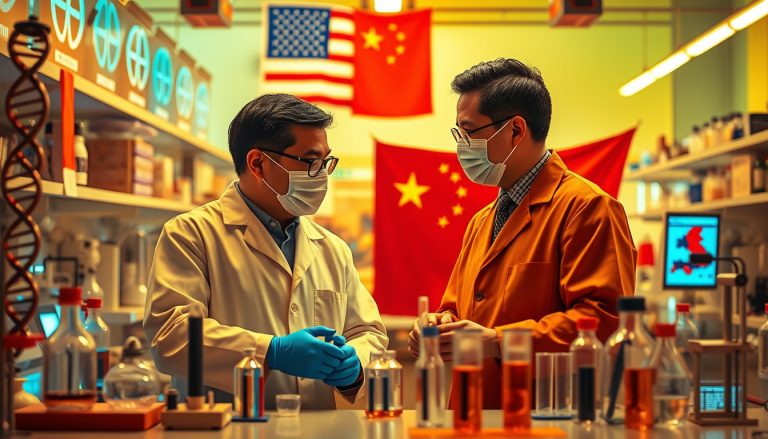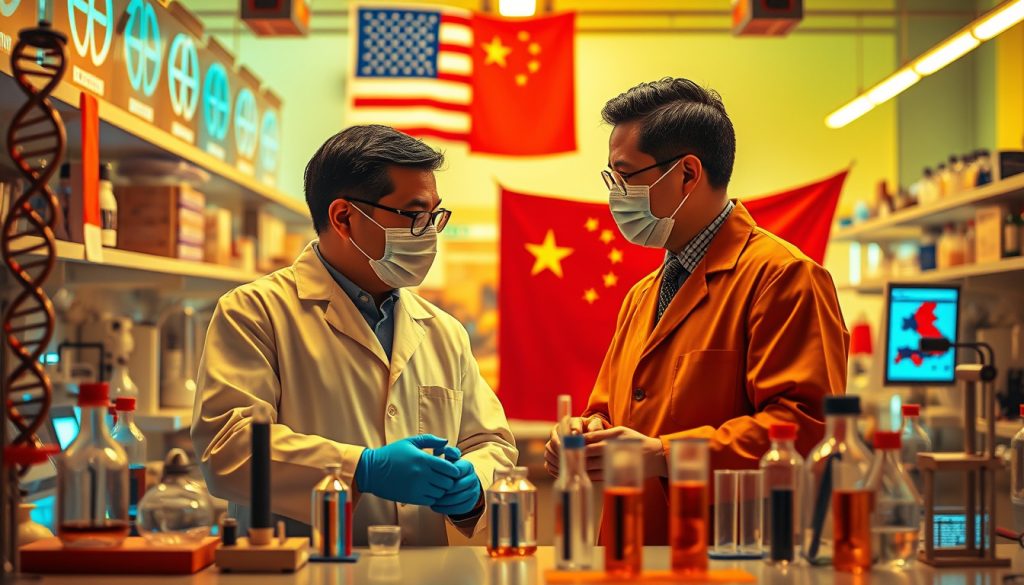Johnson & Johnson (J&J), one of the foremost leaders in the biotechnology and pharmaceutical sector, is setting the stage for its financial performance in 2025 while strategically navigating the complex landscape of emerging tariffs.
Despite the anticipated $400 million impact from tariff-related costs imposed by the Trump administration, J&J has affirmed its adjusted earnings per share forecast at $10.60.
This confidence is underscored by the company’s first-quarter financial results for 2025, which report an impressive $2
1.9 billion in sales, reflecting a
2.4% increase compared to the prior year.
The pharmaceutical giant faces significant challenges, particularly in its medical device division, exacerbated by both U.S.
tariffs and retaliatory measures from China against American products.
In light of these tariff threats, J&J’s strategic response includes a substantial $55 billion investment over the next four years directed toward the establishment of new drug manufacturing facilities in the United States—an initiative aimed at producing the majority of its advanced medicines domestically.
This bold move is seen not only as a means to bolster its manufacturing capabilities but also as a proactive approach to mitigate the risks associated with fluctuating international trade policies.
CEO Joaquin Duato has noted that tax incentives could offer a more effective pathway to stimulate U.S.
manufacturing than the looming tariffs, asserting the importance of stabilizing the supply chains that are vital to healthcare delivery.
Analysts view J&J’s resilience amid these tariff threats as a positive indicator for the company and the broader branded pharmaceutical industry, suggesting that its proactive measures position it favorably in a time of uncertainty.
Furthermore, as the Department of Commerce explores the national security implications of pharmaceutical imports—which may lead to additional tariffs affecting both branded and generic drugs—J&J’s engagement with government officials to address potential vulnerabilities in the healthcare supply chain underscores its commitment to navigating these challenges effectively.

Key Takeaways
- J&J forecasts adjusted earnings per share of $10.60 despite facing $400 million in tariff-related costs.
- The company plans to invest $55 billion over four years to boost domestic drug manufacturing.
- Analysts see J&J’s resilience in a challenging tariff environment as a positive indicator for the pharmaceutical sector.
Financial Performance and Tariff Impact
In the realm of biotechnology, navigating financial landscapes often hinges on understanding external factors such as tariffs and government policy.
Johnson & Johnson’s recent earnings forecast sets a significant precedent in this context.
The pharmaceutical giant, maintaining an adjusted earnings per share projection of $10.60 for 2025, also disclosed an anticipated financial strain of $400 million stemming from recent tariff implementations by the Trump administration.
This acknowledgment marks J&J as the vanguard among major pharmaceutical entities in publicly releasing its first-quarter financial results for 2025, which reflected a robust $21.9 billion in sales—a
2.4% increase compared to the previous year.
Notably, J&J is particularly vigilant concerning tariff repercussions on its medical device sector, as potential retaliatory tariffs from China loom, potentially affecting U.S.
exports.
In an assertive move against the backdrop of tariff uncertainties, J&J plans to allocate a substantial investment of $55 billion over the next four years to establish domestic drug manufacturing facilities.
This strategic initiative aims to bolster the production of advanced medicines within U.S.
borders, a pivot that J&J’s CEO Joaquin Duato suggests is a more efficient pathway to enhancing U.S.
manufacturing capacity than relying solely on tariffs.
Furthermore, he has expressed concern about the disruptive implications that these tariffs may have on supply chains essential to the pharmaceutical industry.
From an analytical standpoint, J&J’s ability to maintain stability in an increasingly tumultuous environment is viewed as a fortifying signal for the broader branded pharmaceutical sector.
In addition to fortifying their manufacturing capacity, J&J is advocating for dialogues with government entities to address and mend vulnerabilities that exist within the healthcare supply chain.
The ongoing investigation by the Department of Commerce into national security implications of pharmaceutical imports heightens the urgency of these discussions, as it could precipitate further tariffs impacting both branded and generic drugs.
As biotech executives continue to navigate this complex landscape, the developments at J&J serve as a crucial case study in responding to external economic pressures and leveraging strategic investments to secure long-term viability.
Strategic Investments in U.S. Manufacturing
The decision by Johnson & Johnson to heavily invest in U.S.
manufacturing is significant not only for the company but also for the broader landscape of the biotechnology sector.
By committing $55 billion to build new drug manufacturing facilities domestically, J&J aims to establish a resilient supply chain that is less vulnerable to international trade disputes and tariff fluctuations.
This investment reflects a strategic pivot towards self-sufficiency in drug production, particularly in light of the increasing complexities associated with global supply chains.
Moreover, J&J’s proactive approach is indicative of a broader trend among biotechnology firms to mitigate external economic pressures by fostering local manufacturing capabilities.
As tariff-related uncertainties become more pronounced, J&J’s strategy could serve as a model for other biotechnology executives seeking to balance operational efficiency with the need for robust supply chain management in a volatile market.















